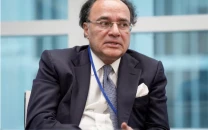How come Islamic Banks pay consistent returns?
Discover answers to the most commonly asked questions about Islamic banks nowadays

Why Islamic banks pay consistent returns? When it’s based on profit and loss sharing why they never share losses? How is this Islamic? How can an Islamic bank which is actually in loss, pay consistent profit to their depositors? These are some of the many questions raised against Islamic banks nowadays. We will try to find out answers to these question based on the Shariah guidelines, Islamic banks’ business model and their risk mitigation techniques used for that matter.
Profit and Loss Sharing
At the core of Islamic banking principles lies the concept of profit and loss sharing (PLS). This principle emphasises equitable distribution of risks and rewards among stakeholders, aligning with the Islamic values of fairness and justice. Under Shariah law, individuals are not entitled to compensation without bearing some of the initial investment risks, a principle known as "al-ghounm bi al-ghourm."
This principle gives rise to the PLS model, where parties involved in financial transactions mutually share risks and returns. The principle is embodied in the mudarabah contract, which allows Islamic banks to fulfill a traditional intermediation role. Under this contract, the bank assumes dual roles as both the entrepreneur (mudarib) and the capital provider (Rab al mal).
On the liability side, acting as a mudarib, the bank manages customer deposit accounts. On the asset side, as Rab al mal, it channels collected funds towards entrepreneurial ventures. In a mudaraba setup, gains are shared, while losses are absorbed solely by the capital provider.
Islamic Bank’s Assets
Islamic assets are typically categorised into commercial assets and PLS assets. The former includes instruments such as Murabaha, Istisna, Salam, and Ijara, which involve the bank in commercial activities rather than traditional intermediation. These instruments do not operate on the PLS principle but instead involve the transfer of asset ownership from the bank to customers.
The primary PLS assets are Musharakah and Mudarabah contracts. In a Musharaka agreement, the bank and the customer form a partnership to finance a project or transaction, sharing risks in proportion to their contributions. This type of contract can generate regular income for Islamic banks, allowing them to offer competitive returns to stakeholders.
In contrast, a Mudarabah contract entails a partnership between the bank (as the capital provider) and an entrepreneur (as the mudarib), where the capital provider bears the risk of loss while the entrepreneur's liability is limited, except in cases of negligence or misconduct. Profits are distributed according to predetermined rules after deducting management fees paid to the bank.
Profit-sharing investment accounts
One of the distinctive features of Islamic banking is the utilisation of profit-sharing investment accounts (PSIA). These accounts, unique to Islamic financial institutions, operate based on the Mudaraba concept, where investors (known as investment account holders or IAH) share in profits and losses with the bank.
Unlike traditional bank deposits, PSIA holders assume the risk of asset losses, except in cases of negligence or misconduct by the bank. This setup places PSIA holders in the role of investors rather than mere depositors, highlighting the investment-oriented nature of Islamic banking.
However, the implementation of PLS and PSIA also raises governance challenges for Islamic banks. PSIA holders, being treated as investors, do not enjoy the same level of protection as depositors or shareholders. This discrepancy in rights and protections can impact the credit-worthiness of Islamic banks, particularly concerning capital and risk management decisions made by bank managers.
Unlike conventional banks where depositors are guaranteed repayment, PSIA holders are exposed to investment risks without the same level of protection. This dynamic can influence bank behavior, potentially leading to riskier investment decisions and increased susceptibility to insolvency risks.
Moreover, the substantial share of PSIA within Islamic banks' liabilities adds complexity to risk management strategies. While PSIA facilitate investment in lucrative yet risky ventures like Mudarabah and Musharakah, they also pose challenges in terms of monitoring and managing these investments effectively. In a landscape characterised by incomplete information and limited transparency, PSIA holders face heightened risks of mismanagement of funds by the bank, further complicating governance frameworks.
PSIA: Competitive return and risk taking
Profit-sharing investment accounts (PSIA) serve as a fundamental component of Islamic finance, embodying the principle of equitable risk-sharing. Designed as an alternative to interest-earning term deposits, PSIA offer returns tied to the profitability of bank assets, subject to pre-agreed criteria. Islamic banks, bound by Sharia principles, operate within a competitive landscape alongside conventional banks, necessitating adjustments to their strategies and operations. However, they face challenges such as liquidity management constraints due to limited interbank market access for short-term funding.
Unlike conventional banks, Islamic banks face limitations in avenues like short-term money market instruments or interest-free borrowing from central banks for managing their liquid reserves. Additionally, the absence of deposit insurance or lender-of-last-resort mechanisms compatible with Shariah principles places greater risk burdens on Islamic banks, particularly regarding liquidity risks. The underdeveloped secondary market for Islamic financial instruments further limits asset and liquidity management capabilities, exacerbating liquidity challenges.
These disadvantages contribute to the complexity of predicting and stabilising PSIA returns, which depend heavily on competitive market conditions. Consequently, Islamic banks may struggle to maintain market power and compete effectively with conventional banks.
Displaced Commercial Risk (DCR)
This loss of competitiveness, indirectly influenced by PSIA, introduces the concept of displaced commercial risk (DCR). DCR refers to the risk of losing competitiveness due to uncertainty regarding PSIA returns, especially when actual returns fall below investor expectations.
To mitigate DCR and attract investors, Islamic banks utilise tools like profit equalization reserves (PER) and investment risk reserves (IRR). PER helps in smoothing profit payouts during periods of economic fluctuation, while IRR covers unexpected losses on PSIA returns. The management fee, a significant revenue source for Islamic banks, plays a crucial role in profit-sharing between shareholders and PSIA holders but also faces limitations.
During economic downturns or loss of competitiveness, Islamic banks may use reserves to maintain PSIA returns. If reserves are insufficient, management fees may be sacrificed to uphold expected returns for PSIA holders. In extreme cases, banks may need to increase equity capital to bolster investor confidence and prevent massive fund withdrawals. Conversely, a higher volume of PSIA signifies a favorable competitive environment and expected profits, prompting regulatory capital strengthening to address potential DCR impact.
Regulatory frameworks in some jurisdictions mandate minimum regulatory capital levels to cover DCR, emphasising the need to protect PSIA holders' funds. PSIA's unique nature raises questions about their impact on Islamic banks' behavior, particularly regarding capital and risk-taking decisions. Balancing profitability, risk management, and regulatory compliance remains a critical challenge for Islamic banks navigating the complexities of PSIA-based financing.
Current Practices of Islamic Banks in PER & IRR
The purpose of Profit Equalization Reserves (PER) and Investment Risk Reserves (IRR) in Islamic banks is to enhance their competitiveness against conventional banks. These reserves act as a protective mechanism for Islamic banks against risks like Displaced Commercial Risk (DCR), Withdrawal Risk (WR), and reputational risks. Their primary function is to mitigate fluctuations in rates of return and reduce the risk of having to pay profits out of equity during periods of lower-than-expected profits.
DCR, as defined by prevailing standards, refers to the pressure faced by Islamic banks to pay investors-depositors a higher rate of return than what is stipulated in the investment contract terms when the banks underperform and fail to generate sufficient profits for distribution to account holders. Consequently, many Islamic banks choose to forgo their profit share to meet the demands of investors-depositors and prevent them from withdrawing their funds. Over time, Islamic banks have gained substantial experience in managing DCR and WR, leading to the establishment of standard practices in the industry regarding PER and IRR.
Managing Rate of Return Risk
The policy guidelines issued by the State Bank of Pakistan (SBP) direct Islamic Banking Institutions (IBIs) to develop a robust risk management framework specifically focusing on Rate of Return Risk (RORR). This framework aims to identify and evaluate potential market elements that could lead to fluctuations in the rate of return on investments compared to the expected rate of return for Profit and Loss Sharing (PLS) account holders. The SBP advises IBIs to assess their reliance on current deposits, as unusual withdrawals from these accounts could negatively impact the potential rate of return.
These guidelines emphasise several essential prerequisites for effective RORR management, including well-organised management structures, knowledgeable boards, proficient employees, and dynamic systems and processes within IBIs.
IBIs are encouraged to thoroughly understand, recognise, measure, and analyse all factors, dimensions, and elements that contribute to RORR. The recommended approach suggests using various methods tailored to the intensity and nature of their investments.
These methods range from simpler gapping methods to more sophisticated simulations or comprehensive frameworks that assess expected cash-flow variabilities. Additionally, IBIs are advised to employ different balance sheet methods to minimize their rate of return risk.
Furthermore, IBIs in Pakistan are mandated to devise strategies and practices to meet the expectations of their PLS depositors. The SBP clarifies that it is a commercial decision for IBIs to share profits with PLS account holders, provided these decisions adhere to guidelines and procedures approved by their respective Boards of Directors.
The standard operating procedures outlined by the SBP guide IBIs in formulating a risk management system specifically addressing rate of return risk. Enhanced methods and strategies will enable IBIs to manage rate of return risk more efficiently and ensure the stability and profitability of their operations.
The Way Forward
Islamic banking has emerged as an alternative to traditional banking systems. However, it faces challenges in competing with well-established conventional banks that have dominated the market for decades. One of the main hurdles for Islamic banks is in profit and loss sharing with investors (IAHs). During profitable times, Islamic banks can offer competitive returns. But during losses, if they can't match conventional banks' rates, investors might withdraw their funds, leading to a decline in deposits and financial instability (DCR).
To address these challenges, international organisations like AAOIFI and IFSB, along with countries like Pakistan, have developed guidelines. These guidelines cover aspects such as profit and loss appropriation, internal rate of return (IRR), accounting practices, and disclosure standards. This framework aims to protect Islamic banks from financial risks and ensure fairness for all stakeholders, including investors, bankers, and society as a whole. Additionally, it provides a basis for Shariah scholars and researchers to delve deeper into equitable reserve management for all involved parties.
Moreover coexisting with conventional banking brings forth several challenges for Islamic banking. Firstly, without an Islamic index rate of return, Islamic banks rely on conventional interest rates as a benchmark, making them highly sensitive to interest rate fluctuations. It's suggested that Islamic banks need their rate-setting mechanism, posing a challenge for Muslim scholars to develop alternative guidelines and a permissible benchmark rate in line with Islamic jurisprudence.
Secondly, Islamic banks face Shariah compliance issues as some risk mitigation instruments used by conventional banks are not suitable for Islamic banking practices. This prompts Islamic scholars to devise alternative risk mitigation techniques, which may involve modifying existing instruments or creating new ones adhering to Islamic principles.



















COMMENTS
Comments are moderated and generally will be posted if they are on-topic and not abusive.
For more information, please see our Comments FAQ